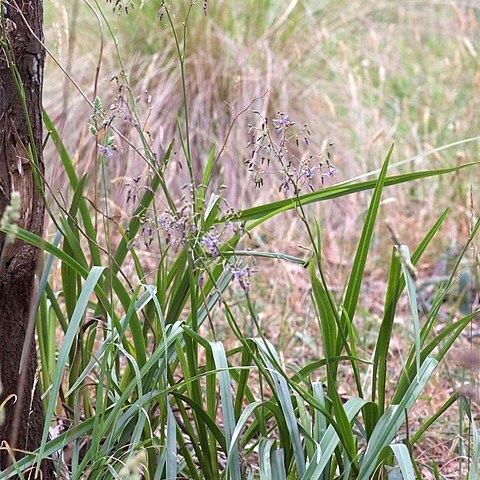A tufted herb. It keeps growing from year to year. It spreads by rhizomes. It forms clumps. The roots are tuberous and there is an underground rhizome. It grows 30-80 cm high and 50-150 cm wide. The leaves are long and strap like. They are 50-80 cm long by 0.5-1.5 cm wide. They have a long sheathing base. The upper surface in shiny and has slight ridges. The flowers are in a loose panicle. They are on long stalks 80-120 cm long. They have 6 petals. One ring is blue and one white. The stamens are all yellow/orange. The fruit is a blue/purple shiny berry. These are dark blue and 0.8-1.5 cm long. The seed are black.

